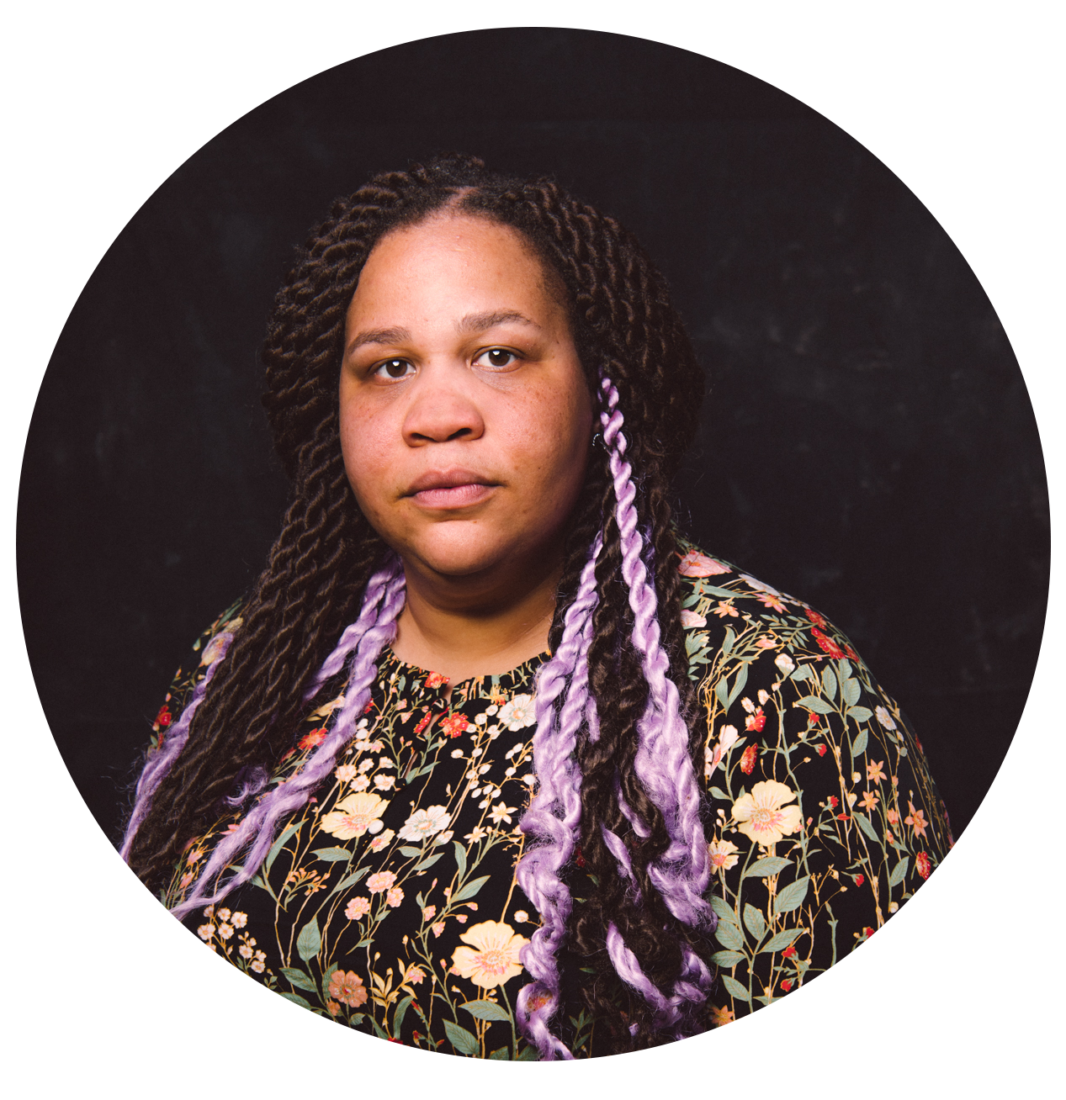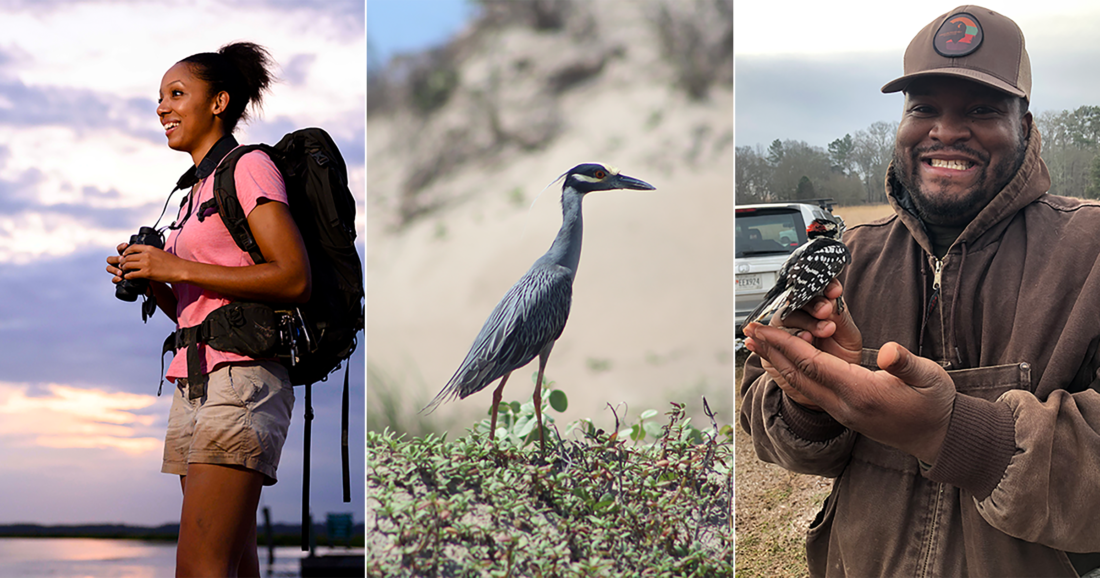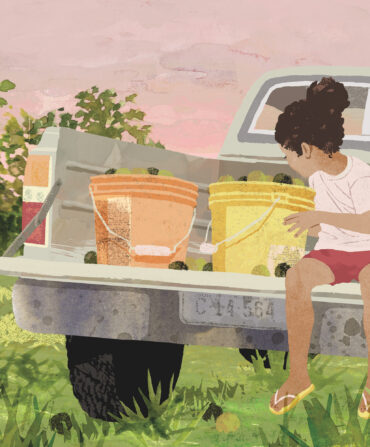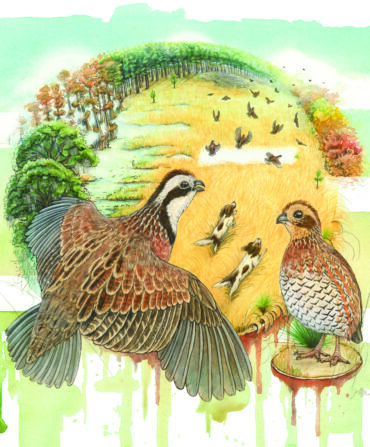To me, birds are synonymous with freedom. Out in the wild they have the power to go where they want, sing when they want, and do what they want. Birds dot the periphery of my everyday life. When COVID-19 canceled most of my work and recreational travel plans, my ability to roam was limited to my backyard.

This new slower world meant that I had to do some reckoning. Before, I was moving so quickly that I had forgotten about the birds. The man that taught me about them wasn’t around anymore—my dad died in 2013 and it was easier to forget the passage of time if I tuned their song out.
Now, the pileated woodpecker shakes me awake every morning with its furious knocking. I watch cardinals chase one another around the dogwood tree while I do dishes for what feels like the hundredth time. I pause to watch the red-tailed hawk fly high above as I get home from the grocery store after an essentials run.
As a thirty-three-year-old Black woman, I am an outlier in the birding world. Data from the U.S. Fish & Wildlife Service’s Birding in the United States study lays it out: The average birder is fifty-three years old, with an above-average income and education. There is also a good chance that this birder lives in the South. That representative birder is slightly more likely to be female, and highly likely to be white. But we black birders are here too—and I have learned that while we are often isolated, we are not alone.
In the first week of June, a group of Black nature enthusiasts launched Black Birders Week.
“Whether it be the way the media chooses to present who is the outdoorsy type, or the racism Black people experience when we do explore the outdoors, as we saw recently in [a video in] Central Park….Well, we’ve decided to change that narrative,” says Corina Newsome, one of the week’s cofounders and a graduate student studying biology at Georgia Southern University in Statesboro.
The week was meant to celebrate the cultural diversity in the birding community, and so far the Instagram page @BlackAFInSTEM has 24,000 followers. I spoke with Newsome, as well as the wildlife biologist Alex Troutman, who is also in Statesboro, about their passion for nature, their desire to protect it, and why they love birds so much.
Black Birders Week gained momentum quickly—tens of thousands of posts and retweets a day.
Newsome: The first day of our initiative, when we launched #BlackInNature, I sat in my room crying. I have this friend group of Black birders, but we’re spread all over the country. When it comes to our physical spaces, we’re usually the only Black people there. We wanted to make a splash, but didn’t expect to have the outpouring of support. It’s been incredible.
You’ve both traveled the world studying animals. Is there anything different about bird-watching in the South?
Newsome: I went to college in Ohio, and that’s where I learned to bird. The winters are cold, and you don’t get quite as much diversity of birds. I wanted to see a pileated woodpecker—it’s the largest woodpecker in North America, and I actively looked for this bird for a year. I was looking in birding groups and listening to bird radio for leads. When I moved to southern Georgia in August 2018, I realized that pileated woodpeckers are literally in people’s front yards. They’re everywhere.
Troutman: I felt that way about bald eagles—I was working up in Alaska one year and I would stop every time I saw one. The people around me were like, “They’re like pigeons up here.” Different spaces, different species.
A number of black birders have said that racism—sometimes subtle, sometimes overt—tinges their bird-watching experiences.
Troutman: Most of the encounters I’ve had have been subtle, where people look at me like they’re thinking, What are you doing here?
Last year, I’d just gotten a new lens for my camera, so I looked up birding spots near Corpus Christi, Texas. When I got out of the car, no one said anything. Usually people greet other birders or wave. I tried to start a conversation to see if anyone had seen anything and they just didn’t respond. As I was getting my camera out, I could hear people packing up and walking away. I took a couple of pictures up on the platform, and when I looked around, everyone had moved away. I thought it was kind of weird. I went back down and took pictures where they were, and everyone started heading back up to the platform. I thought, Am I doing something wrong here, or is this people’s way of saying I don’t belong?
Do you have any advice for someone new to birding?
Troutman: You know more about birds than you think. Step outside and you’ll see a cardinal, or a robin, or some type of sparrow. Learn more about two or three birds and build from there.
Newsome: Don’t feel like you need to be able to identify everything you see. You can start by becoming a specialist on one bird. If you have a smartphone, I recommend downloading the Audubon app because it walks you through different stages of identifying a bird. It asks you questions like, “How big is it? What shape, what color is on its body? Where are you in the world?” and it will narrow down a list of possible birds.
You’re both doing work in the marshes of southern Georgia. Is there a bird there that you’re captivated by at the moment?
Troutman: The roseate spoonbill.
Newsome: Yeah, roseate spoonbills. It’s like seeing a flamingo—you know they’re around, but you’re really lucky if you see one.
You can follow Newsome (@hood__naturalist) and Troutman (@n8ture_al) on Instagram, along with these other recommended Southern Black birding follows:
@blackafinstem
@blackgirlbirding
@ikesbirdinghikes
@jasonwardny
@wildandincolor (Ornithologist J. Drew Lanham, whom Garden & Gun profiled here.)
@nadialovestocreate
@juitamartinez
@kiesha_trails








